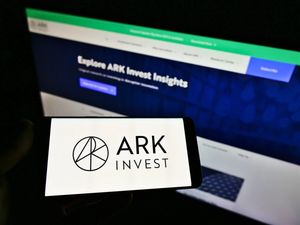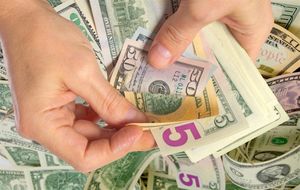
In a financial landscape increasingly defined by uncertainty, gold and silver futures have surged to unprecedented all-time highs, captivating investors and signaling profound shifts in global economic sentiment. The precious metals have become beacons of stability, with their valuations propelled by a complex interplay of international macroeconomic conditions, persistent geopolitical tensions, and specific domestic vulnerabilities, particularly a weakening Indian Rupee. This remarkable rally underscores a broad-based flight to safety and a growing apprehension about inflationary pressures and currency devaluations worldwide.
The relentless ascent of these commodities reflects a market grappling with sustained inflation, aggressive central bank gold accumulation, and a burgeoning industrial demand for silver, especially from green technologies. For investors, these record-breaking prices present both opportunities and challenges, highlighting the enduring appeal of tangible assets in turbulent times. The implications extend beyond the commodities markets, potentially influencing monetary policy decisions, corporate strategies, and the purchasing power of consumers globally.
The Unprecedented Ascent: A Detailed Look at the Commodity Boom
The past two years, culminating in September 2025, have witnessed a historic rally in both gold and silver futures. Gold, the traditional safe haven, has repeatedly broken its own records, with spot prices surging to an astonishing US$3,791 per ounce on September 23, 2025, and futures climbing to within US$20 of US$3,800, eventually reaching a high of US$3,824.60 per ounce during the week ending September 28, 2025. This follows a trajectory that saw gold breach US$3,000 per ounce for the first time in March 2025 and peak at US$3,500 per ounce in April. Domestically in India, MCX gold futures for December delivery touched an all-time high of ₹1,15,139 per 10 grams, reflecting the global trend amplified by local dynamics.
Silver, often considered gold's more volatile counterpart, has mirrored and, in some respects, outshone gold's performance. Surging approximately 38% year-to-date in 2025, silver has reached over US$46 per ounce by late September, nearing its historical all-time high of US$49.51 recorded in April 2011. On September 24, 2025, prices soared to a 14-year high above US$44 per ounce, with spot prices in Delhi reaching ₹1,41,900 per kilogram and MCX December delivery silver futures hitting a record ₹1,42,189 per kg during the week ending September 28, 2025. This significant appreciation marks a crucial moment for the industrial metal, driven by both investment and robust industrial demand.
The timeline leading to these highs is marked by a series of escalating global events. Persistent inflation, remaining stubbornly above central bank targets, has been a primary catalyst, driving investors to seek refuge in assets that historically preserve value. Geopolitical flashpoints, including ongoing conflicts in Ukraine and the Middle East, coupled with unpredictable US trade policies, have fueled a pervasive sense of global uncertainty, intensifying safe-haven demand. Simultaneously, central banks worldwide have been diversifying their reserves at an unprecedented pace, with net gold purchases exceeding 1,000 metric tons annually since 2022, further tightening supply and underpinning prices.
Key players in this monumental shift include institutional investors, who have significantly increased their allocations to precious metals, and central banks, whose strategic buying has provided a strong floor for prices. Retail investors, particularly in regions with strong cultural ties to gold and silver like India, have also contributed significantly, converting savings into physical assets. Initial market reactions have been characterized by a rush into precious metal-backed ETFs and a heightened interest in mining stocks, as participants seek to capitalize on or hedge against the current price trajectory. The sustained upward momentum suggests that these highs are not merely speculative bubbles but rather a reflection of deep-seated economic anxieties and structural shifts in global finance.
Companies Navigating the Precious Metal Surge
The record-breaking surge in gold and silver prices creates a distinct set of winners and losers across various industries, compelling companies to adapt their strategies in response to this evolving market.
On the winning side are primarily mining companies. Major gold producers like Barrick Gold (NYSE: GOLD) and Newmont Corporation (NYSE: NEM), along with silver mining giants such as Pan American Silver Corp. (NASDAQ: PAAS) and Wheaton Precious Metals Corp. (NYSE: WPM), are experiencing a significant boost to their revenues and profit margins. Higher commodity prices directly translate to increased earnings, allowing these companies to fund exploration, reduce debt, or return capital to shareholders. Companies with lower operating costs and strong reserve bases are particularly well-positioned to capitalize on the elevated prices. Furthermore, junior mining companies engaged in exploration and development of new gold and silver deposits may find it easier to raise capital for their projects, as investor sentiment towards the sector improves.
Conversely, several sectors face headwinds. Jewelry retailers and manufacturers, such as Tiffany & Co. (NYSE: TIF) (a subsidiary of LVMH Moët Hennessy Louis Vuitton (EPA: MC)) and India's Titan Company Limited (NSE: TITAN), might see a mixed impact. While the intrinsic value of their inventory increases, the higher cost of raw materials could squeeze margins or necessitate price increases, potentially dampening consumer demand, especially for discretionary purchases. In India, where gold jewelry is a significant cultural purchase, the record high prices could lead to a shift towards lighter jewelry or alternative gifts, impacting sales volumes.
Another significant group affected are industrial users of silver. Silver's dual role as a precious metal and an industrial commodity means that sectors heavily reliant on silver for manufacturing, such as solar panel producers (e.g., First Solar (NASDAQ: FSLR)), electric vehicle (EV) manufacturers (e.g., Tesla (NASDAQ: TSLA)), and electronics companies (e.g., Apple (NASDAQ: AAPL)), will face increased input costs. While the demand for these technologies is robust, the rising cost of silver could pressure their profit margins or force them to seek alternative materials, although silver's unique properties often make substitution difficult. Companies that have hedged their silver exposure or have long-term supply agreements at favorable prices will be better insulated from these cost increases.
Finally, financial institutions involved in commodity trading and investment banking may see increased activity and revenue from derivatives, hedging solutions, and capital-raising efforts for mining companies. However, those with significant exposure to industries negatively impacted by high commodity prices might face indirect risks. The overall impact on companies is largely dependent on their direct exposure to precious metals, their ability to pass on costs, and their strategic hedging policies.
Wider Significance and Broader Market Implications
The current surge in gold and silver prices is not an isolated event but a potent indicator of broader shifts within the global financial landscape. It fits squarely into a trend of increasing investor anxiety regarding inflationary pressures and the stability of traditional fiat currencies. With inflation rates stubbornly elevated across major economies, precious metals are being rediscovered as essential hedges against the erosion of purchasing power, a role they have historically played during periods of economic uncertainty. This renewed emphasis on tangible assets signals a potential paradigm shift away from purely growth-driven investments towards a more balanced portfolio approach emphasizing wealth preservation.
The ripple effects of this commodity boom are far-reaching. For competitors, the strength in gold and silver could draw capital away from other asset classes, including equities and bonds, as investors seek perceived safer havens. This could particularly impact sectors sensitive to interest rate changes or those seen as having less intrinsic value. For partners within the supply chain, such as refiners, distributors, and logistics providers for precious metals, the increased volume and value of trade present significant opportunities. However, for industries reliant on silver as an industrial input, the rising costs could compel innovation in material science or lead to increased pressure for supply chain efficiencies.
Regulatory and policy implications are also significant. The sustained rally could prompt central banks to re-evaluate their monetary policies, particularly concerning interest rates and quantitative easing. If the price surge is interpreted as a sign of entrenched inflation, it might reinforce a more hawkish stance, even as some central banks, like the US Federal Reserve, have begun to signal rate cuts. Furthermore, governments in major gold-consuming nations like India might consider adjusting import duties or implementing other measures to manage domestic demand and prevent excessive capital outflow, especially given the impact of a weakening Rupee. The growing central bank accumulation of gold also suggests a strategic diversification away from the US dollar, potentially accelerating de-dollarization efforts and altering the global reserve currency landscape.
Historically, such significant rallies in precious metals often coincide with periods of economic upheaval or geopolitical instability. Comparisons can be drawn to the 1970s oil shocks, the dot-com bubble burst in the early 2000s, and the 2008 financial crisis, all of which saw substantial increases in gold prices as investors sought refuge. The current environment, characterized by a unique blend of persistent inflation, widespread geopolitical conflicts, and an unprecedented industrial demand for silver from green technologies, suggests that this rally may have more fundamental underpinnings than previous cycles. This confluence of factors points to a potentially prolonged period of elevated precious metal prices, challenging conventional investment wisdom and reshaping global economic strategies.
What Comes Next: Navigating the Future of Precious Metals
The ongoing rally in gold and silver futures presents a dynamic and complex outlook for the financial markets, with both short-term volatility and long-term structural shifts on the horizon. In the short term, the trajectory of these precious metals will largely be influenced by continued geopolitical developments, the pace of global inflation, and central bank monetary policy decisions. Any escalation of existing conflicts or emergence of new geopolitical flashpoints could further fuel safe-haven demand, pushing prices even higher. Conversely, a de-escalation or a clearer path to disinflation could introduce some price consolidation or even a temporary pullback.
Looking further ahead, the long-term prospects for gold and silver appear robust. For gold, sustained central bank buying and its enduring role as a hedge against currency debasement and systemic risk are likely to provide a strong floor for prices. Analysts are forecasting gold to average US$3,675 per ounce by Q4 2025 and potentially surpass US$4,000 per ounce by Q2 2026. For silver, the structural supply deficit driven by burgeoning industrial demand from solar panels, electric vehicles, and 5G technology is a critical long-term driver. Projections suggest silver could reach US$40 to US$50 per ounce by the end of 2025, with some bullish forecasts anticipating a new all-time high above US$52.50.
These market conditions necessitate strategic pivots and adaptations across various sectors. Investors may need to re-evaluate their portfolio allocations, considering an increased weighting towards precious metals as a core component of their long-term wealth preservation strategy. Companies involved in mining will likely prioritize maximizing production efficiency and exploring new deposits to capitalize on high prices. Conversely, industrial consumers of silver may need to explore hedging strategies or invest in R&D for alternative materials, although silver's unique properties often limit substitution.
Market opportunities will emerge for those adept at navigating volatility, including specialized funds and ETFs focused on precious metals. Challenges will include managing the risks associated with price corrections and the potential for increased regulatory scrutiny if the market becomes overheated. Potential scenarios range from a continued, albeit volatile, upward trend driven by persistent global risks and industrial demand, to a more subdued environment if global stability returns and inflation is tamed. However, given the current confluence of factors, the momentum appears to favor continued strength in the precious metals market, compelling investors and businesses to remain vigilant and adaptable.
Comprehensive Wrap-up: Assessing the Lasting Impact
The ascent of gold and silver futures to all-time highs marks a pivotal moment in financial markets, driven by a powerful confluence of global and domestic factors. Key takeaways include the enduring appeal of precious metals as safe havens amidst persistent geopolitical tensions and macroeconomic uncertainty, particularly sustained inflation. The aggressive accumulation of gold by central banks worldwide, coupled with the weakening of currencies like the Indian Rupee, has further amplified these trends. For silver, its dual role as a precious metal and a critical industrial commodity, especially in green technologies, has created a structural supply deficit, providing a robust fundamental underpinning for its price surge.
Moving forward, the market is poised for continued vigilance. The current environment suggests that the factors driving this commodity boom are not transient but rather indicative of deeper systemic shifts. Investors should assess their portfolios for adequate exposure to precious metals as a hedge against ongoing inflation and potential currency devaluations. The strong performance of gold and silver also signals a broader re-evaluation of risk and return in a world grappling with significant economic and political transformations.
The lasting impact of this event is likely to be profound. It could accelerate the trend of de-dollarization as central banks diversify their reserves, potentially altering the dynamics of global finance. For public companies, particularly in the mining and industrial sectors, strategic planning around commodity price volatility will become even more critical. Consumers, especially in price-sensitive markets like India, may adjust their purchasing habits, influencing retail strategies.
Investors should closely watch several key indicators in the coming months: the trajectory of global inflation rates, central bank interest rate decisions, and any significant shifts in geopolitical stability. Further depreciation of currencies against the US dollar, particularly in emerging markets, will also be a crucial factor. Additionally, monitoring the supply-demand dynamics for industrial silver, especially from the burgeoning green energy sector, will be essential for understanding its future price movements. This period of record-high precious metal prices is a testament to the market's response to uncertainty, underscoring the timeless value of gold and silver in safeguarding wealth.
This content is intended for informational purposes only and is not financial advice.






